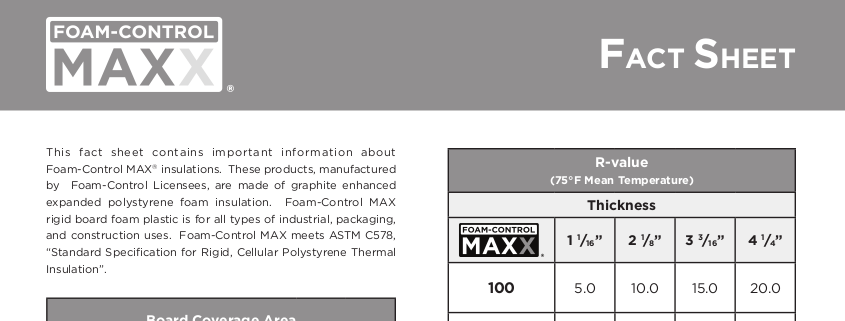Discovering Cutting-Edge Foam Control Technologies for Lasting Practices
Discovering Cutting-Edge Foam Control Technologies for Lasting Practices
Blog Article
Understanding the Significance of Foam Control in Industrial Processes
In industrial processes, foam control is typically an ignored yet essential aspect that straight influences operational efficiency and item integrity. The visibility of too much foam can result in significant challenges, including interfered with blending and diminished response kinetics, which may ultimately impact item high quality across numerous sectors such as pharmaceuticals and food production. Recognizing the subtleties of foam monitoring, including efficient strategies and potential advancements, increases important questions about finest methods and future advancements. What are the effects for industries striving for boosted performance and compliance?

The Role of Foam in Industry
Foam plays a considerable role in numerous industrial procedures, affecting both efficiency and product quality. In markets such as food and beverage, pharmaceuticals, and petrochemicals, foam can serve both beneficial and detrimental purposes. For instance, in the food industry, foam stabilization is crucial during procedures like whipping lotion or generating beer, where the quality of foam straight affects consumer perception and item features.
In chemical manufacturing, foam can work as an obstacle, avoiding the correct blending of reagents, which can lead to suboptimal yields and insufficient responses. On the other hand, in processes like flotation protection in mineral handling, foam is made use of to divide beneficial minerals from waste product, enhancing healing rates.
Additionally, in wastewater therapy, foam development can show the visibility of natural issue, functioning as an important criterion for procedure tracking. The capacity to regulate foam is essential for maintaining process stability and optimizing functional costs. Comprehending the role of foam in industrial applications permits operators and designers to execute reliable foam management approaches, making certain that foam adds favorably to total procedure performance while reducing its possible drawbacks.
Usual Obstacles of Foam Formation
Many sectors encounter considerable difficulties due to the unplanned formation of foam during numerous procedures. Foam can disrupt the efficiency of procedures, leading to boosted downtime and higher operational prices. In sectors such as pharmaceuticals, food and beverage, and wastewater therapy, foam can prevent blending, decrease product yield, and complicate separation procedures.
Moreover, foam can produce safety and security threats by obstructing clear exposure, which is crucial in environments where exact measurements and monitoring are essential. The existence of foam can additionally result in devices damages, as too much pressure buildup may occur in reactors and containers.
In addition, the need for regular intervention to manage foam can draw away sources and labor, eventually affecting performance. Ecological guidelines posture one more challenge, as excessive foam can result in non-compliance problems in effluent discharge, requiring extra treatment processes.
Effect On Item Top Quality

In chemical manufacturing, foam can impede response kinetics by restricting gas-liquid call, bring about incomplete reactions and lower returns. This not only influences the performance of production yet can likewise lead to low quality final product that do not fulfill regulatory requirements or customer specifications.
Additionally, in drugs, foam development throughout formulation processes can introduce air bubbles right into delicate substances, endangering medication efficacy and security. In enhancement, foam can cause functional problems such as overflow and equipment breakdowns, enhancing downtime and upkeep prices, even more affecting product high quality and consistency.
Techniques for Effective Foam Control
Dealing with the obstacles posed by foam is essential for maintaining item top quality across numerous industrial fields. Effective foam control techniques are vital to mitigate the adverse effects of foam development, which can disrupt procedures and concession product honesty.
One of the primary strategies involves the selection and application of appropriate antifoaming representatives. These representatives are developed to decrease surface area stress and prevent bubble development, and their effectiveness can differ based on the particular process conditions. Regular monitoring of foam levels is critical to guarantee timely intervention, allowing drivers to use antifoaming representatives prior to foam comes to be a significant issue.
Additionally, enhancing procedure parameters such as temperature level and frustration can play a vital duty in foam monitoring. Minimizing anxiety strength or changing feed rates can reduce foam generation. Carrying out mechanical foam control devices, such as foam breakers or defoamers, can also supply efficient remedies for high-foaming applications.
Training employees on foam monitoring techniques and the value of preserving optimum operating problems even more enhances foam control efforts. Foam Control. By employing a check my reference mix of these approaches, sectors can efficiently take care of foam, guaranteeing functional performance and preserving the high quality of their items
Future Fads in Foam Administration
How will innovations in modern technology form the future of foam management in industrial procedures? The integration of expert system (AI) and machine knowing will transform foam control methods, allowing real-time monitoring and adaptive responses to foam development. These innovations can evaluate operational specifications and historic data to forecast foam behavior, enabling preemptive actions that enhance process performance.
Additionally, the development of innovative foam control agents, consisting of bio-based and eco-friendly alternatives, is obtaining traction. These technologies not only mitigate foam yet also straighten with sustainability goals, minimizing the ecological impact of commercial operations.
Automation will additionally play an important function, as automated foam control systems can maximize the dosage of defoamers based upon real-time dimensions, reducing waste and boosting effectiveness.
Moreover, the fostering of IoT (Internet of Points) devices will help with smooth interaction in between tools and foam control systems, guaranteeing an alternative approach to foam management. (Foam Control)
Final Thought
To conclude, reliable foam control is important for enhancing industrial processes throughout numerous sectors. The challenges posed by foam development can dramatically affect item top quality and functional effectiveness. Carrying out critical foam administration methods, including using antifoaming representatives and procedure optimization, reduces these challenges. As sectors remain to progress, ongoing developments in foam control technologies will even more improve productivity and sustainability, ensuring conformity visit their website with ecological laws while maintaining the integrity of items.
In the food industry, foam stabilization is vital during procedures like whipping lotion or generating beer, where the top quality of foam straight influences consumer assumption and item attributes.
Recognizing the function of foam in industrial applications enables operators and designers to carry out reliable foam administration methods, guaranteeing that foam contributes favorably to overall process efficiency while lessening its possible disadvantages.
Regular tracking of foam degrees is vital to guarantee timely intervention, allowing operators to use antifoaming agents before foam ends up being a significant concern.
Executing mechanical foam control tools, such as foam breakers or defoamers, can additionally provide reliable options for high-foaming applications.
The combination of man-made intelligence (AI) and device understanding will certainly transform foam control methods, allowing real-time tracking and adaptive feedbacks to foam formation.
Report this page